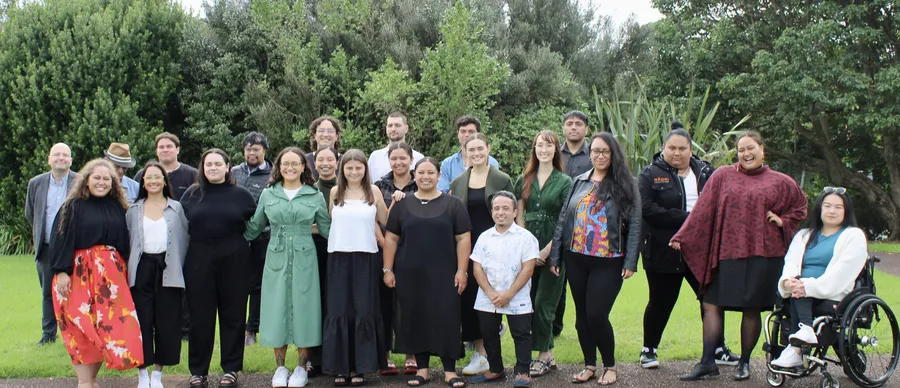29 July 2022
New Zealanders have embraced public interest journalism, with 36 million page views of funded stories since NZ On Air's Public Interest Journalism Fund (PIJF) began one year ago.
In that time, NZ On Air data shows that PIJF content has been viewed across 37 tracked websites with readers, viewers and listeners consistently spending between one to two minutes engaging with the content and, since January, weekly unique browser numbers exceeding 400,000.
“This data, for websites alone, shows us that the fund has achieved what it was set up to do, which was to support New Zealand news media to fill a public interest need,” said Raewyn Rasch (Ngāi Tahu/Kai Tahu), Head of Journalism, NZ On Air.
“We are now seeing, on average, around 800-1,000 funded articles each week,” says Rasch. “The impact has far exceeded what we originally expected. And with page views exceeding 36 million in that time, it tells us that people are most definitely engaging with that content.”
There have so far been four funding rounds, allocating close to $44m, with three more to go till the fund wraps up in June next year.
Since it was launched, the PIJF has processed more than 300 applications requesting around $137.5m. These have been across public interest journalism projects, new journalism roles, and training and development programmes – with 149 roles*, 15 training programmes and 51 projects funded for 57 media entities.
Media commentator and PIJF independent assessor, Dr Gavin Ellis, says the PIJF “exists to facilitate a public good and we can now see clear evidence it is achieving that aim.
“It has funded projects that examine public issues, provided more meaningful scrutiny of institutions such as the courts and local government, and assisted in better resourcing of Māori, Pasifika and ethnic journalism. I see the return of worthwhile stories that, without the PIJF, media organisations could no longer afford to tell.”
One example, the Local Democracy Reporting (LDR) scheme**, is a programme administered by RNZ and involving a network of local government reporters throughout the country to provide reporting trained on local government accountability.
“Community boards, regional and city council meetings were just not being attended,” says David Reid, LDR Manager. “And now, LDR reporting is growing month by month, with more than 3,000 stories from around the country produced in the past 12 months. Those stories are shared for free to the 31 media partners who signed up to the scheme. And in 2021, the scheme generated more than 9 million page views. So there is an appetite.”
The Open Justice – Te Pātiti programme was funded in the second round and has also seen a significant increase in multimedia court reporting after funding 15 roles within NZME. The programme also supplies content to Whakaata Māori, Allied Press and RNZ.
“Court reporting is a key facet of an open and transparent legal system and a well-functioning democracy,” says Rasch. “Thanks to the PIJF funding, the programme has been able to significantly scale up multimedia reporting of court cases and legal issues, particularly in regional centres, and reach those community audiences.”
The PIJF has also funded the first-ever Māori, Pacific and diverse voices Journalism Cadetship training scheme, Te Rito, run by a collaboration of NZME, Māori Television, Warner Bros Discovery and Pacific Media Network. Twenty-three cadets were chosen and are currently on their second work experience placement.
“Already we have seen cadets producing items for the newsrooms and producing content which is appearing across the media partners,” says Gesa Luamanu, Te Rito programme manager. “Feedback from the partners and cadets has been extremely positive, adding that diversity of voice to the newsroom.”
The fund has also provided more than $13m to support Māori and iwi journalism, funding 46 roles across both Māori and non-Māori media organisations, along with projects and training.
Journalist and presenter, Mihingarangi Forbes, says the PIJF has given Māori media the freedom to dream of what equity could look like across the sector.
“While we have a way to go, projects like Kōmiromiro (iwi journalism training), Te Rito (diversity cadetships) and Teina 2 Tuakana (Māori/Pasifika rangatahi mentoring initiative) have boosted the numbers of Māori story tellers and strengthened their skills,” says Forbes.
“The PIJF continues to support news and current affairs through a Māori lens with programmes like The Hui and Party People but recognises the young and regional demographic of our people with shows like Te Ōhinga (youth news) and Pākiwaha (bilingual radio current affairs). The role funding has meant newsrooms have had the support of Māori to increase and lift cultural intelligence and their understanding of Aotearoa.”
There have also been a number of local and regional projects funded to ensure rural and South Island communities are better served by media, training for photojournalists, and funding of roles, documentary and current affairs series to reach Pacific audiences.
“The PIJF was set up to support public interest journalism and to ensure that NZ media entities – from large to small and local – would be able to produce public interest journalism that might otherwise not be able to be produced,” says Rasch.
“This fund is one of the only in the world able to offer such a wide range of support across the media sector while maintaining editorial independence, and the levels of audience engagement show it has been very worthwhile.”
Full details of funding distributed to date are available on our website here.
Editor’s Note:
*Not all roles have been contracted
**The LDR scheme was established in 2019 but funded by the PIJF from 2021.

